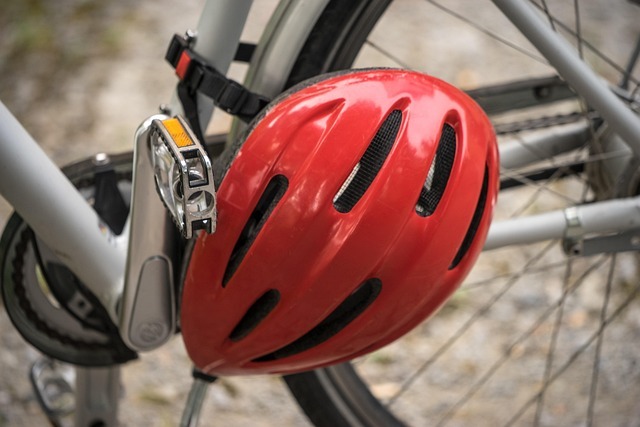Bikers Not Wearing Helmets Despite the Dangers of Riding Without One
Thursday, May 29th, 2025 -- 9:01 AM

(Hope Kirwan, Wisconsin Public Radio) As temperatures warm across Wisconsin, more people are getting outside to enjoy the weather.
But, according to Hope Kirwan with the Wisconsi Public Radio, Dr. Michael Kim has noticed an alarming trend among the bicyclists and scooter riders traveling along the busy street in front of his home in Madison.
“I’m beginning to see a lot more kids on the road without helmets, and adults as well,” said Kim, who is medical director for UW Health’s pediatric emergency medicine department.
He said it’s a trend that’s become more pronounced as bicycle use increased during the COVID-19 pandemic. National data shows only half of kids who ride bikes wear a helmet, according to Kim, despite the significant impact the safety tool can have on preventing serious head injuries.
“About 45 percent of head injuries can be prevented by wearing a helmet, and about 65 percent of serious head injuries can be prevented with wearing a helmet,” Kim said.
These injuries can range from a mild concussion to a traumatic brain injury causing a lifelong disability or even death. Over the last two years, an average of 70 percent of kids hospitalized at American Family Children’s Hospital for a bike accident weren’t wearing a helmet.
The percentage not wearing a helmet was even higher for kids admitted after an accident involving motorized equipment like an e-bike or electric scooter.
The availability of motorized options, including hoverboards and electric skateboards, has taken off in the last five years. Kim said they can lead to more risk, especially when users are able to travel speeds approaching 30 miles per hour.
“When the speed increases, there’s significant force that gets applied when it hits the pavement or a wall or a telephone pole,” he said. “So it really does increase the risk of head injury quite a bit.”
Twenty-one states have a law requiring children to wear bicycle helmets, which Kim said can be helpful in normalizing helmet wearing. But he and other experts agree the most effective way to increase use in kids is having their parents and other adults wear a helmet. Ashley Baggett leads Safe Kids Southeast Wisconsin, one of 10 coalitions around the state focused on preventing childhood injury.
“One thing that people may think is the more skilled you get in bike riding, the less you need to wear a helmet or the less important it is, because they don’t think that they’re going to fall,” Baggett said. “But everyone’s at risk of falling and injuring their head, so it’s very important for parents to set that example for their kids.”
Baggett’s program focuses not only on making sure kids are wearing helmets, but that they’re fitted properly. She said sizing is based on head circumference, not age group, and parents can look for helmets with dials that allow for the fit to be further adjusted.
“Just because they’re a toddler doesn’t mean their head’s gonna fit in a toddler helmet,” she said. “They may need an adult-sized helmet already.” She also encouraged parents and guardians to check a helmet’s expiration date.
After about five years, the padding starts to break down, which Baggett said is especially true when exposed to high temperatures in a garage or similar environment.
Feel free to contact us with questions and/or comments.




